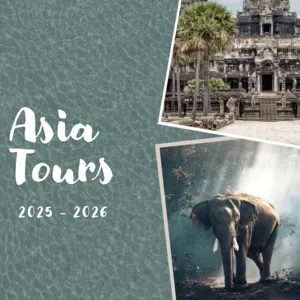Cruise Destinations Bangladesh
Cruise Destinations Bangladesh: Unveiling the Rivers of Bengal
Embark on an unforgettable journey through the heart of Bangladesh, a land crisscrossed by a mesmerizing network of rivers. Cruise Destinations Bangladesh offers a unique perspective on this vibrant country, allowing you to explore its rich culture, stunning landscapes, and diverse wildlife from the comfort of a river vessel. Forget the bustling roads; here, the waterways are your highways, and the gentle rhythm of the river sets the pace for your adventure. This comprehensive guide unveils the magic of cruising in Bangladesh, from the mighty Padma and Meghna rivers to the tranquil backwaters of the Sundarbans.
Why Choose a River Cruise in Bangladesh?
Bangladesh is a land defined by its rivers. A Bangladesh river cruise isn’t just a vacation; it’s an immersion into the very soul of the nation. Here are just a few reasons why cruising is the best way to experience Bangladesh:
Unparalleled Access to Remote Areas
Many of Bangladesh’s most captivating destinations are located along its rivers, often inaccessible by road. A cruise provides exclusive access to remote villages, ancient temples, and untouched natural beauty. Imagine drifting past vibrant rural life, witnessing traditional fishing techniques, and encountering the warmth of Bangladeshi hospitality firsthand.
The Sundarbans: A UNESCO World Heritage Site
No trip to Bangladesh is complete without exploring the Sundarbans, the world’s largest mangrove forest. A Sundarbans river cruise is the ideal way to navigate this unique ecosystem, home to the elusive Royal Bengal Tiger, diverse birdlife, and a captivating array of flora and fauna. Several cruises navigate to the Sundarbans, making it one of the most popular cruise routes in Bangladesh.
Cultural Immersion
River cruises offer a chance to connect with local communities in a way that other forms of travel simply can’t. Witness daily life unfold along the riverbanks, visit bustling riverside markets, and experience the authentic culture of rural Bangladesh. You may even have the opportunity to witness traditional cultural performances or sample local delicacies.
Comfort and Convenience
Forget the hassle of packing and unpacking. Your floating hotel travels with you, providing comfortable accommodations, delicious meals, and stunning views at every turn. Enjoy the convenience of having all your needs met while you relax and soak in the beauty of Bangladesh. Cruise Lines offer a variety of itineraries for you to select the best fit.
Popular Cruise Destinations in Bangladesh
While the Sundarbans are a major draw, Bangladesh offers a variety of other fascinating cruise destinations:
Dhaka and Surrounding Rivers
Begin your journey in the bustling capital city of Dhaka and explore the Buriganga River. Witness the vibrant Sadarghat river port, visit historical landmarks like the Ahsan Manzil (Pink Palace), and experience the energy of this dynamic city from a unique perspective. A Dhaka City Break is a great add-on to a river cruise.
Barisal and the Backwaters
Venture south to Barisal, known as the “Venice of Bengal,” and explore its intricate network of canals and backwaters. Discover floating markets, lush greenery, and a tranquil pace of life far removed from the city bustle.
Chittagong and the Karnafuli River
Explore the port city of Chittagong and cruise along the Karnafuli River, witnessing the bustling shipyards and the scenic beauty of the surrounding hills.
Sylhet and the Surma River
Discover the tea gardens and rolling hills of Sylhet, cruising along the picturesque Surma River and enjoying the region’s natural beauty.
Top 10 Unique Experiences Around Cruise Destinations Bangladesh
To make your cruise journey even more memorable, we’ve curated a list of ten unique experiences that capture the essence of Bangladesh, categorized by their most defining characteristic:
1. Most Interesting: Ahsan Manzil (Pink Palace), Dhaka
Explore this stunning palace, once the residence of the Nawab of Dhaka, showcasing Indo-Saracenic Revival architecture. Learn about its rich history and the role it played in shaping the city.
Address: 01 Islampur Rd, Dhaka 1100, Bangladesh.
Opening Hours: 10:30 AM – 5:30 PM (Closed on Thursdays).
Availability: Open to the public.
Prices: Approximately BDT 200 (USD 2) for foreigners.
2. Most Piquant: Kawran Bazar, Dhaka
Experience the raw, unfiltered energy of Dhaka’s largest wholesale market. It’s a sensory overload, with the sights, sounds, and smells of fresh produce, spices, and fish, offering a glimpse into the city’s vibrant commercial heart.
Address: Kawran Bazar, Dhaka, Bangladesh.
Opening Hours: Operates 24/7, but most active early morning.
Availability: Open to the public.
Prices: Varies depending on purchases.
3. Most Spectacular: Sundarbans Mangrove Forest
Witness the awe-inspiring scale of the world’s largest mangrove forest, home to the Royal Bengal Tiger and a rich biodiversity. A boat safari here is an unforgettable experience.
Address: Sundarbans, Khulna Division, Bangladesh.
Opening Hours: Accessible year-round, but best visited during the dry season (October to March).
Availability: Tours require permits and guides.
Prices: Varies significantly based on tour operator and duration (starting from around BDT 5,000 or USD 58 per day).
4. Funniest: Rickshaw Art, Dhaka
The vibrant and often humorous rickshaw art scene in Dhaka is a unique cultural expression. Take a rickshaw ride and enjoy the colorful paintings depicting everything from Bollywood stars to fantastical scenes. It is best to use the Taxi transfer.
Address: Throughout Dhaka, Bangladesh.
Availability: Ubiquitous.
Prices: Rickshaw fares are negotiable, typically starting from BDT 20.
5. Most Mysterious: Puthia Temple Complex, Rajshahi
Explore this complex of ancient Hindu temples, each with its own unique architectural style and intriguing history, shrouded in a sense of mystery and the passage of time.
Address: Puthia, Rajshahi, Bangladesh.
Opening Hours: Generally accessible during daylight hours.
Availability: Open to the public.
Prices: No entry fee.
6. Most Extreme: Trekking in the Chittagong Hill Tracts
For the adventurous, trekking in the Chittagong Hill Tracts offers challenging terrain, stunning views, and encounters with indigenous communities. (Note: Requires permits and careful planning due to security considerations.)
Address: Chittagong Hill Tracts, Bangladesh.
Opening Hours: Dependent on tour operators and permits.
Availability: Restricted access; requires permits.
Prices: Varies greatly depending on the tour.
7. Most Inspiring: Liberation War Museum, Dhaka
Pay tribute to the sacrifices made during Bangladesh’s War of Independence. This moving museum tells the story of the struggle for liberation and inspires reflection on the country’s resilience.
Address: Agargaon, Dhaka 1207, Bangladesh.
Opening Hours: 10 AM – 6 PM (Closed on Sundays).
Availability: Open to the public.
Prices: Approximately BDT 100 (USD 1).
8. The Most Amazing: Star Mosque (Tara Masjid), Dhaka
Marvel at the intricate mosaic work of this historic mosque, adorned with thousands of glittering stars. It’s a stunning example of Mughal architecture and a testament to the country’s artistic heritage.
Address: Abul Khairat Rd, Dhaka 1100, Bangladesh.
Opening Hours: Accessible during prayer times; best to visit between prayers.
Availability: Open to the public (respectful attire required).
Prices: No entry fee.
9. The Most Atmospheric: Sonargaon
Step back in time in the ancient capital of Bengal. Explore the ruins of Panam Nagar, a deserted city of crumbling mansions, and visit the Folk-Art and Crafts Museum.
Address: Sonargaon, Narayanganj District, Bangladesh.
Opening Hours: Varies by site, generally daylight hours.
Availability: Open to the public.
Prices: Museum entry fee around BDT 100 (USD 1).
10. The Most Unusual: Floating Markets of Barisal
Witness the unique floating markets where vendors sell produce from their boats. It’s a vibrant and colorful scene, offering a glimpse into the traditional riverine lifestyle.
Address: Barisal Division, Bangladesh (various locations).
Opening Hours: Early mornings, typically starting before dawn.
Availability: Best accessed by boat tour.
Prices: Boat tour prices vary.
Planning Your Bangladesh River Cruise
Before you embark on your river adventure, consider these practical tips:
Best Time to Visit
The ideal time for a river cruise in Bangladesh is during the dry season, from October to March, when the weather is pleasant and the river levels are manageable.
Visa Requirements
Check the visa requirements for your nationality before traveling. Many nationalities can obtain a visa on arrival or an e-visa.
You can learn more about Visa in the relevant section of the site
What to Pack
Pack light, comfortable clothing, insect repellent, sunscreen, a hat, and any necessary medications. Consider bringing binoculars for wildlife viewing.
Check out our travel Insurance offers to help protect you on your next adventure.
Currency and Communication
The local currency is the Bangladeshi Taka (BDT). While credit cards are accepted in larger cities, it’s advisable to carry cash for smaller purchases and in rural areas. Consider purchasing an eSIM for convenient internet access.
Health and Safety
Consult your doctor regarding necessary vaccinations and precautions. Drink bottled water and be mindful of food safety. Be aware of your surroundings and take necessary safety precautions, especially in crowded areas.
Choosing the Right Cruise
Several tour operators offer river cruises in Bangladesh, ranging from budget-friendly options to luxurious vessels. Consider your budget, desired itinerary, and level of comfort when making your selection. Look for operators with a strong commitment to sustainable tourism and responsible travel practices. Tour Operators or Online Travel Agencies (OTAs)
Cruise Destinations Bangladesh offers a truly unique and unforgettable travel experience. It’s a chance to connect with nature, culture, and history in a way that few other destinations can match. Prepare to be enchanted by the rivers of Bengal and the warmth of the Bangladeshi people.


